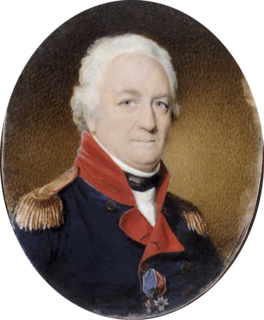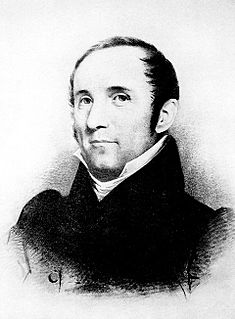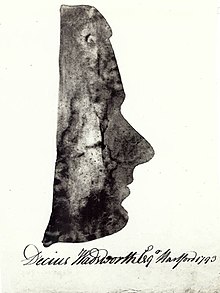
The Springfield Armory, located in the city of Springfield, Massachusetts, was the primary center for the manufacture of United States military firearms from 1777 until its closing in 1968. It was the first federal armory and one of the first factories in the United States dedicated to the manufacture of weapons. The site is preserved as the Springfield Armory National Historic Site, Western Massachusetts' only unit of the national park system. It features the world's largest collection of historic American firearms.

Henry Burbeck was a long-time artillery officer in the United States Army who served from the early days of the American Revolutionary War through the War of 1812. He served as Chief of Engineers from 1798 to 1802.

The United States Army Ordnance Corps, formerly the United States Army Ordnance Department, is a sustainment branch of the United States Army, headquartered at Fort Lee, Virginia. The broad mission of the Ordnance Corps is to supply Army combat units with weapons and ammunition, including at times their procurement and maintenance. Along with the Quartermaster Corps and Transportation Corps, it forms a critical component of the U.S. Army logistics system.

Alexander Brydie Dyer was an American soldier in a variety of 19th century wars, serving most notably as a general and the Army's Chief of Ordnance for the U.S. Army Ordnance Corps during the American Civil War.
Wadsworth's cipher, or Wheatstone's cipher, was a cipher invented by Decius Wadsworth, a Colonel in the Ordnance Corps of the United States Army. In 1817, he developed a progressive cipher system based on a 1790 design by Thomas Jefferson, establishing a method that was continuously improved upon and used until the end of World War II.

William Wadsworth was an officer in the New York State militia, before and during the War of 1812. As a Brigadier General, he commanded the New York militia contingent in the American army at the Battle of Queenston Heights. He waived his right to command over Lieutenant Colonel Winfield Scott, of the United States Army. During the battle, he faced the enemy at all times so he would not be shot in the back and appear to be cowardly. Waving his sword and swearing at the troops back across the river, hoping to instill the fighting spirit in them, he made a genuine but vain attempt to get the militia to cross and reinforce their position.

Louis de Tousard (1749-1817) was a French artillerist who served in the American Continental Army under La Fayette, and later was given a US commission. Tousard wrote two very influential books: one was a proposal for a school for officers that became the blueprint for West Point, and the other was a manual for artillery officers that became standard in the young army.

James Wolfe Ripley was an American soldier who served as a brigadier general in the Union Army during the Civil War. In 1861, he was selected to be the 5th Chief of Ordnance for the U.S. Army Ordnance Department. He was instrumental in the early days of the war in modernizing the artillery's ordnance. However, Ripley also delayed the introduction of repeating firearms, particularly the Gatling gun and the Spencer rifle, into U.S. arsenals, an act that has been widely criticized by later historians.
Decius was a 3rd-century Roman emperor.
Wadsworth is a surname. Notable persons with that surname include:

Adelbert Rinaldo Buffington was a United States Army Brigadier General who served as the 10th Chief of Ordnance for the U.S. Army Ordnance Corps.

During the American Revolutionary War, the New York Provincial Company of Artillery was created by the New York Provincial Congress in 1776 to defend New York City from British attack.

Fort Sewall is a historic coastal fortification in Marblehead, Massachusetts. It is located at Gale's Head, the northeastern point of the main Marblehead peninsula, on a promontory that overlooks the entrance to Marblehead Harbor. Until 1814 it was called Gale's Head Fort.
William Wadsworth was an early pioneer of New England, a founder of Hartford, Connecticut and the patriarch of numerous and prominent Wadsworth descendants of North America, including the poet Ezra Pound.

Brevet Brigadier General John Baptiste de Barth Walbach (1766-1857), an Alsatian baron who fought in the French Revolutionary Wars, was one of the few foreign-born senior officers in the US Army prior to the Civil War. On coming to join his father in America, he became an aide to Alexander Hamilton, rising to Adjutant General of the United States during the War of 1812. A career Army officer who served for over 57 years, he remained in active duty until his death at the age of 90, making him the oldest acting officer in U.S. history. During his long career he commanded most forts on the eastern seacoast: Fort Constitution, Fort Trumbull, Fort Severn, Fort Monroe, Frankford Arsenal, Fort McHenry, and Fort Pickens. His long career left behind many American place names.

George Bomford (1780–1848) was a distinguished military officer in the United States Army and an inventor and designer of weapons and defensive installations. He served as the second Chief of Ordnance for the U.S. Army Ordnance Corps.

The Chief of Ordnance of the United States Army is a general officer who is responsible for the U.S. Army Ordnance Corps and serves as the Commandant of the U.S. Army Ordnance School at Fort Lee, Virginia. The Chief of Ordnance is primarily focused on the doctrine, training, and professional development of Ordnance officers and soldiers. The position was created simultaneously with the establishment of the U.S. Army Ordnance Department on May 14, 1812.

Brevet Brigadier General George Talcott was a career officer in the United States Army and served as the 3rd Chief of Ordnance of the U.S. Army.
In the early years of the Republic, the United States Army experimented with a number of different artillery formations. For a time, the Artillery Branch and Engineer Branch were combined. Unit designations did not yet contain the terms "Field Artillery" or "Coast Artillery," although units so designated, as well those of the air defense artillery, would eventually trace their lineage and honors to some of the early formations.
Moses Porter was a general in the United States Army during the War of 1812. His career lasted for over 40 years and he is one of the few officers who served in both the American Revolution and the War of 1812.













